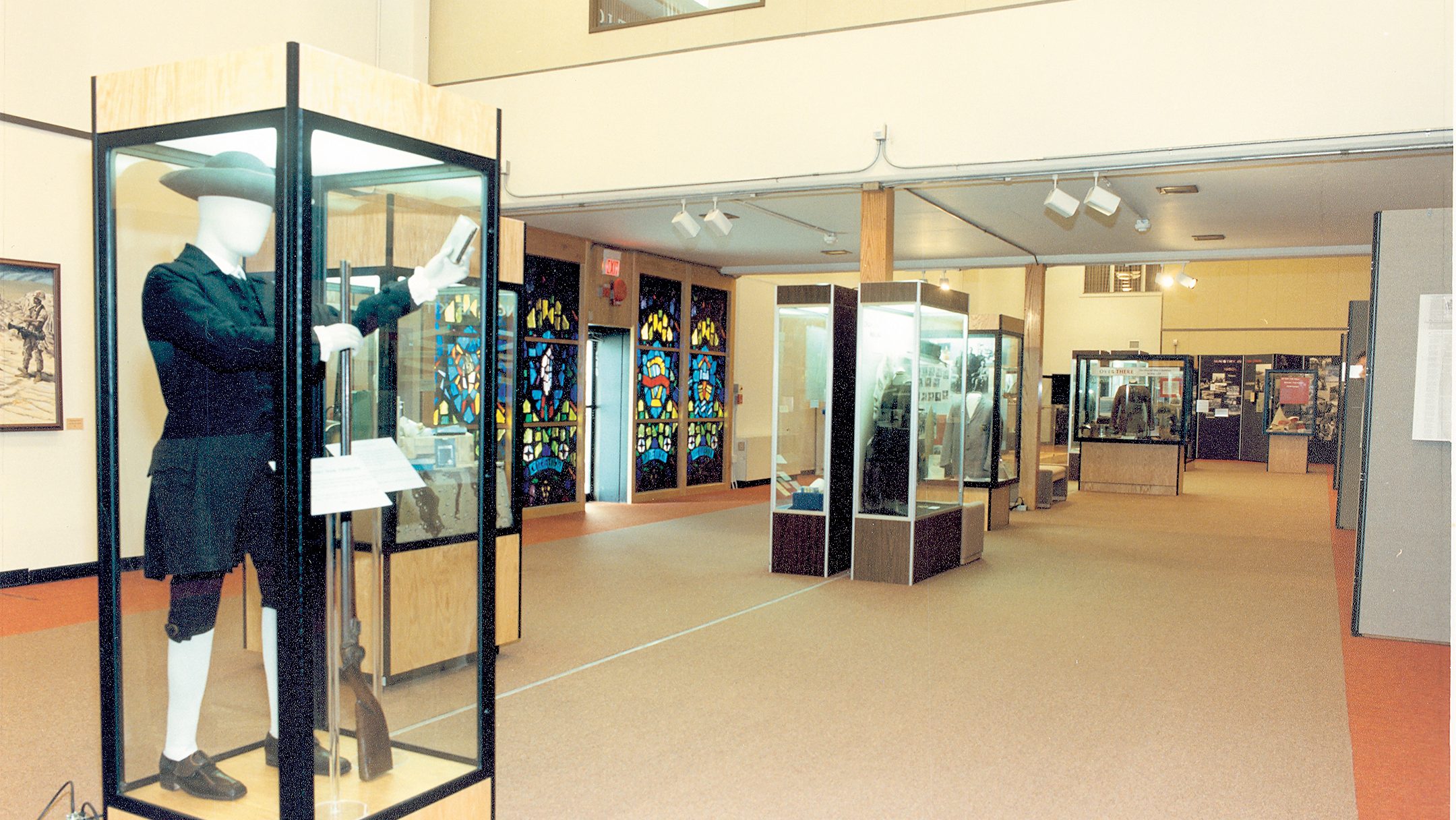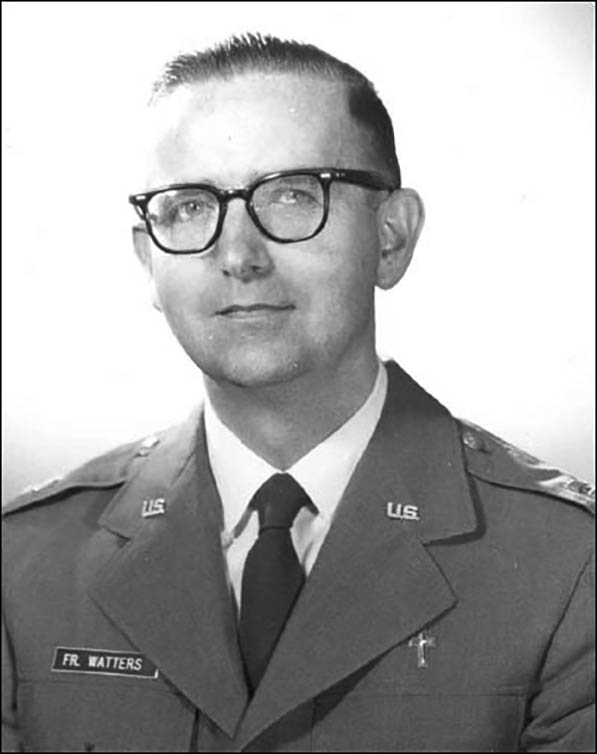
By Melissa Ziobro
FORT MONMOUTH – The United States Army Chaplain Corps celebrates its 248th birthday July 29. Today, the Chaplain Corps is headquartered on Fort Jackson, South Carolina. However, the U.S. Army Chaplain Center and School – the only training center for the Army’s clergy – could once be found right here in Monmouth County. It operated out of Fort Monmouth from 1979 – 1995, in a building named for a New Jersey hero killed during the Vietnam War.
Fort Monmouth was founded in 1917 as a U.S. Army Signal Corps training camp and was long known as the home of the Signal Corps (the branch of the Army charged with all manner of military communications). The U.S. Army Signal Center and School, however, transitioned to Fort Gordon, Georgia, over several years during the Vietnam War era.

that housed the school was renamed in honor of Maj. Charles Watters, a New Jersey native who was killed in action in Vietnam. Courtesy NGEF
The departure of the Signal School from Fort Monmouth had many fearing for the base’s future, decades before the installation would finally close in 2011. But it also created interesting opportunities. For one, it left vacant space on the base which many Fort Monmouth champions argued would make a perfect home for the Army Chaplain School when, in the 1970s, the Department of Defense sought to move it from Fort Wadsworth in New York in advance of turning that installation over to the Navy as a cost-saving measure.
Much to the chagrin of New York politicians, Fort Monmouth won its bid for the Chaplain Center and School by June 1979. As U.S. Rep. James J. Howard (NJ-3) observed at the time that the decision indicated “recognition by the Army that Fort Monmouth is a viable, productive installation that can bring a return on the great investment made in it over the years.”
Chaplain Corps personnel started relocating shortly thereafter and a formal welcoming ceremony was held in September 1979. Maj. Gen. John K. Stoner Jr., then Fort Monmouth’s commander, said “Hallelujah,” as he welcomed the school’s personnel during the ceremony.
At the time of the move, the Chaplain School staff consisted of 51 chaplains and around 100 faculty and staff members. Activities were based in Building 1207, which, as noted above, had previously been used by the Signal School. Minor changes to the building, made to accommodate the Chaplain School, included the installation of three teaching chapels and a library. The building went by several different names over the years but was designated Watters Hall when it housed the Chaplain Center and School.
Charles Joseph Watters was born Jan. 17, 1927, in Jersey City. Growing up, he had two brothers, Edward and Kenneth, and enjoyed vacationing in Belmar. Watters was ordained a Roman Catholic priest in 1953, following his studies at Seton Hall University and Immaculate Conception Seminary. He served parishes in Jersey City, Rutherford, Paramus and Cranford before joining the military. In 1962, he became a Chaplain in the New Jersey Air National Guard. Two years later, he entered active duty as an Army Chaplain with the rank of major.
Deployed to Vietnam in 1966, Watters served the required 12-month tour and voluntarily extended for an additional six months. Assigned to the 173rd Airborne Brigade, he was with his unit when it assaulted Hill 875 near Dak To. On Nov. 19, 1967, Watters was killed in action when an American plane accidentally bombed his position. He was just 40 years old.
His Medal of Honor citation reads, in part: “As the battle raged and the casualties mounted, Chaplain Watters, with complete disregard for his safety, rushed forward to the line of contact. Unarmed and completely exposed, he moved among, as well as in front of, the advancing troops, giving aid to the wounded, assisting in their evacuation, giving words of encouragement, and administering the last rites to the dying. When a wounded paratrooper was standing in shock in front of the assaulting forces, Chaplain Watters ran forward, picked the man up on his shoulders, and carried him to safety. …paratroopers pulled back in preparation for a second assault (and) Chaplain Watters exposed himself to both friendly and enemy fire between the two forces in order to recover two wounded soldiers. Later, when the battalion was forced to pull back into a perimeter, Chaplain Watters noticed that several wounded soldiers were lying outside the newly formed perimeter. Without hesitation and ignoring attempts to restrain him, Chaplain Watters left the perimeter three times in the face of small-arms, automatic-weapons, and mortar fire to carry and to assist the injured troopers to safety. Satisfied that all of the wounded were inside the perimeter, he began aiding the medics–applying field bandages to open wounds, obtaining and serving food and water, giving spiritual and mental strength and comfort… Chaplain Watters was giving aid to the wounded when he himself was mortally wounded.”
During its years at Fort Monmouth, the Chaplain School conducted resident training for clergy entering the Army as chaplains as well as for enlisted men who could serve in the field with chaplains as their assistants. As Lt. Col. James C. Grant Jr. explained in a 1980 interview, “This isn’t a theological school. Its main mission is to expose the students to the military environment.”
“It’s surprising but we get quite a few chaplains coming to us straight out of seminary. These, of course, must be oriented to the Army way of life, which is one of the important things we do here,” he said. Many religious denominations were represented at the school.
The chaplain facilities at Fort Monmouth also produced training materials, developed new Army ministries and provided logistical support to chaplains across the Army. There was even a museum, formally opened in 1983, which safeguarded close to 4,000 artifacts. Objects in the collection included Continental Army bibles, World War II chaplain kits, a cap that belonged to Italian dictator Benito Mussolini, and an ornate antique chapel altar used for many years in the Catholic chapel at Fort Leavenworth, Kansas (where the school was based from 1924 to 1942).
By 1993, the Department of Defense decided that the Chaplain Center and School should move again. The school’s 16th move took it to its current home on Fort Jackson.
The U.S. Army’s Communications-Electronics Command headquarters moved into Watters Hall and renamed it Mallette Hall. That designation honored Lt. Gen. Alfred J. Mallette, commander of the Communications-Electronics Command from July 1990 to July 1992. The building retained that designation until the base closed in 2011.
Melissa Ziobro is the specialist professor of public history at Monmouth University’s Department of History and Anthropology. She served as a Command Historian for the Communications-Electronics Command at Fort Monmouth from 2004 – the base closure in 2011.
Photos courtesy U.S. Army CECOM Historical Office, Aberdeen Proving Ground Maryland, unless otherwise noted.
The article originally appeared in the July 27 – August 2, 2023 print edition of The Two River Times.















